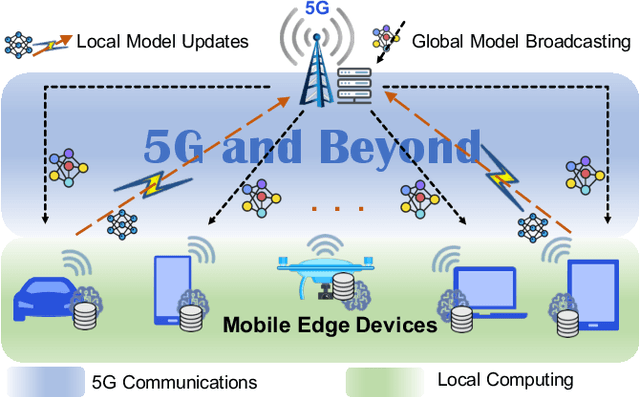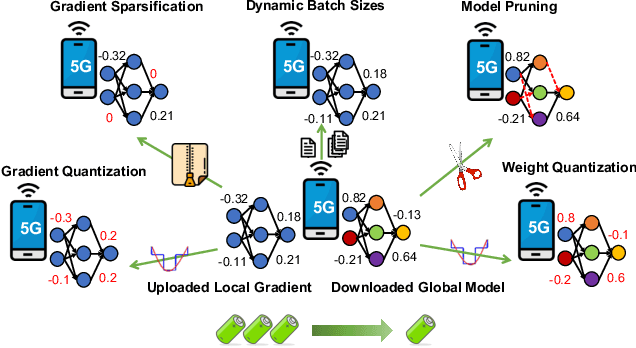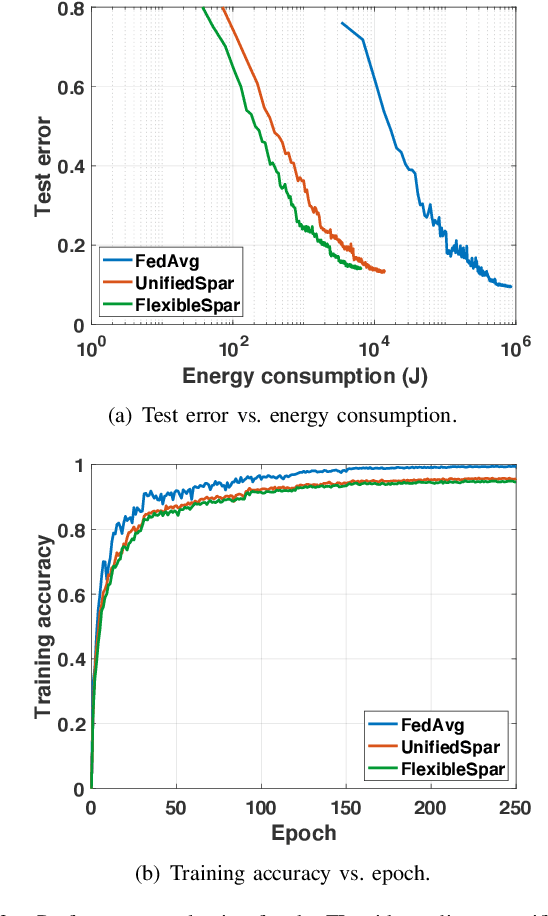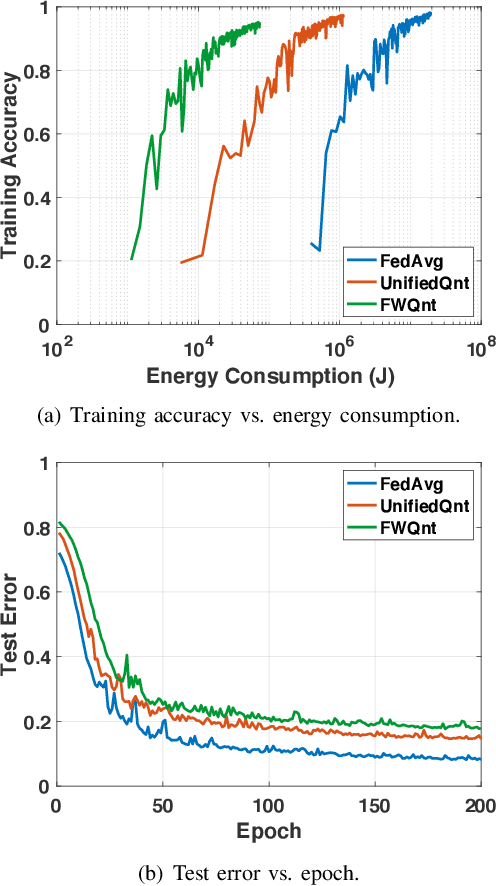Towards Energy Efficient Federated Learning over 5G+ Mobile Devices
Paper and Code
Jan 13, 2021



The continuous convergence of machine learning algorithms, 5G and beyond (5G+) wireless communications, and artificial intelligence (AI) hardware implementation hastens the birth of federated learning (FL) over 5G+ mobile devices, which pushes AI functions to mobile devices and initiates a new era of on-device AI applications. Despite the remarkable progress made in FL, huge energy consumption is one of the most significant obstacles restricting the development of FL over battery-constrained 5G+ mobile devices. To address this issue, in this paper, we investigate how to develop energy efficient FL over 5G+ mobile devices by making a trade-off between energy consumption for "working" (i.e., local computing) and that for "talking" (i.e., wireless communications) in order to boost the overall energy efficiency. Specifically, we first examine energy consumption models for graphics processing unit (GPU) computation and wireless transmissions. Then, we overview the state of the art of integrating FL procedure with energy-efficient learning techniques (e.g., gradient sparsification, weight quantization, pruning, etc.). Finally, we present several potential future research directions for FL over 5G+ mobile devices from the perspective of energy efficiency.
 Add to Chrome
Add to Chrome Add to Firefox
Add to Firefox Add to Edge
Add to Edge